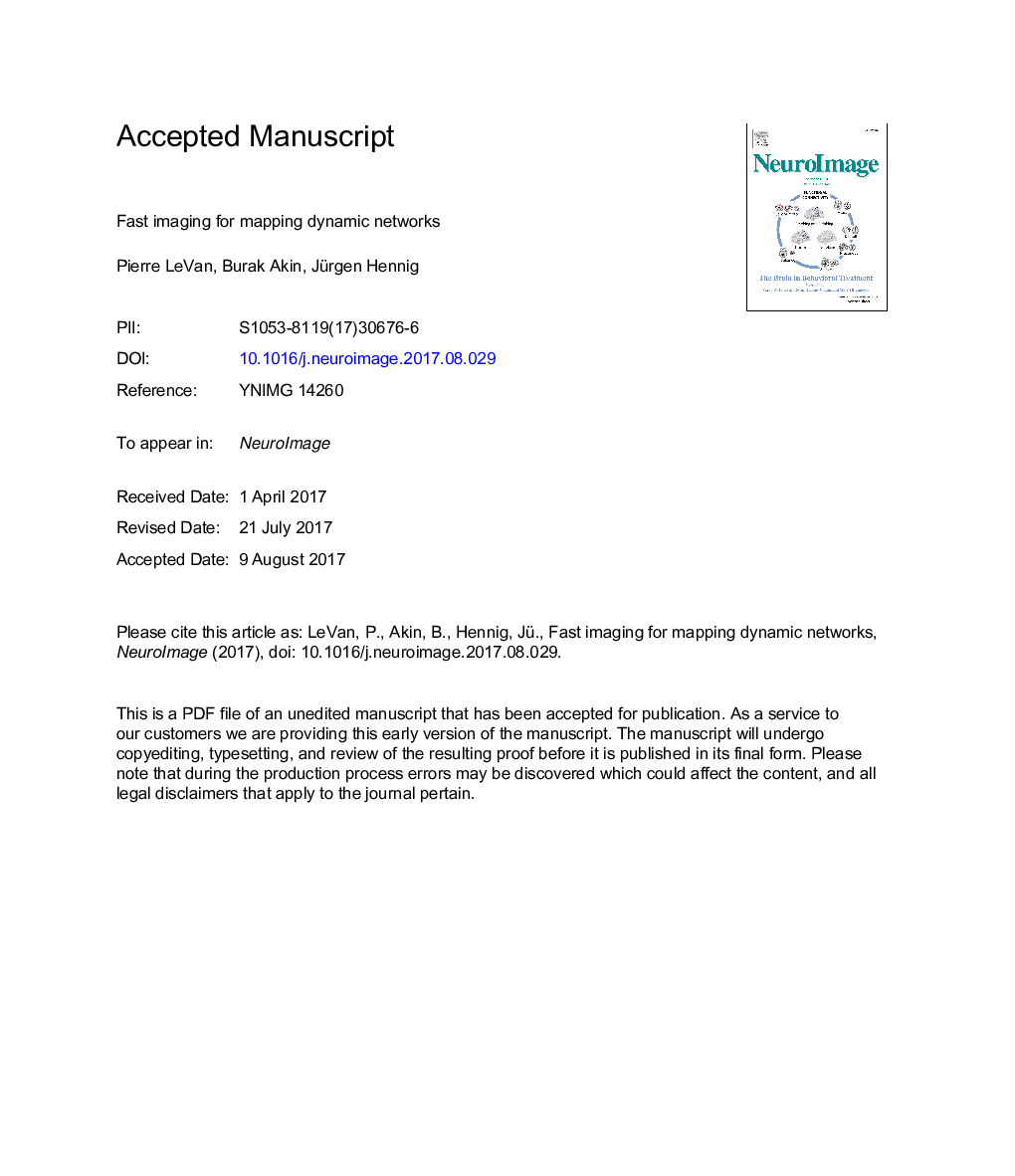| Article ID | Journal | Published Year | Pages | File Type |
|---|---|---|---|---|
| 8957324 | NeuroImage | 2018 | 29 Pages |
Abstract
The development of highly accelerated fMRI acquisition techniques has led to novel possibilities to monitor cerebral activity non-invasively and with unprecedented temporal resolutions. With the emergence of dynamic connectivity and its ability to provide a much richer characterization of brain function compared to static measures, fast fMRI may yet play a crucial role in tracking dynamically varying networks. In spite of the dominance of slow hemodynamic contributions to the BOLD signal, high temporal sampling rates nevertheless improve the measurement of physiological noise, yielding an exceptional sensitivity for the detection of periods of transient connectivity at time scales of a few tens of seconds. There is also evidence that relevant BOLD fluctuations are detectable at high frequencies, implying that the benefits of fast fMRI extend beyond the ability to sample nuisance confounds. Here we review the latest technological advancements that have established fast fMRI as an effective acquisition technique, as well as its current and future implications on the analysis of dynamic networks.
Related Topics
Life Sciences
Neuroscience
Cognitive Neuroscience
Authors
Pierre LeVan, Burak Akin, Jürgen Hennig,
